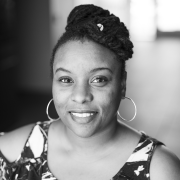Black History Month is much more than a celebration of civil rights martyrs and “firsts.” There is enough content to cover Black history throughout the year, from the diversity of Black culture and identities to connecting historical events to today’s movements. Black history is American history.
In addition to broadening content for this observance, Black History Month should also serve as a reminder for teachers to rid their classrooms of anti-Blackness and white supremacy.
Nonchalant attitudes about Black history can make a lasting impact on young minds. It will stay with them throughout their lives.
I know. It has stayed with me.
In a world history class during my sophomore year of high school, I asked the teacher to incorporate a Black history lesson or project in February. She agreed that it was a good idea.
Yet, she did nothing. I don’t recall learning anything about Black people anywhere in the world in that class. Africa was barely mentioned—no mention of its civilizations, histories, culture or people. Of course, I’d already done my own learning at home. I was proud of my African heritage and the influence Black people had throughout the diaspora. So, I knew what was missing.
Educators acknowledging Black History Month—or Black people, for that matter—was always important to me, considering that Black students and teachers at my rural East Texas school represented a tiny percentage of the student body. It wasn’t uncommon for a classroom to have only one Black student.
As February came to a close, the teacher had ignored my multiple pleas to observe Black History Month. I gave it one more try around the last week in February.
And the teacher quipped, “We have more important things to do.”
Those words zipped through me like a lightning bolt. Was she insinuating that narratives relevant to Black people were insignificant? That there was no need to bother with Black people’s influence on the world—during a month specifically created to do just that? Was it too much to dedicate one class period for something we should have been discussing year-round?
That comment, among other incidents at that school, made it clear that Black students weren’t valued. We weren’t safe to explore our identities or histories. It only solidified what I’d experienced since kindergarten and made me more cynical about racial reconciliation.
Being Black in that space meant hearing racist comments or racial slurs, being overlooked or tokenized, and being expected to assimilate into the dominant culture.
My shock grew into anger, so I stewed at my desk, closed my book and turned to the other Black students. This class happened to have four Black students total. They were just as bothered, so we sat there silently protesting our teacher’s disrespectful response. Rather than acknowledge the offense, she was instead punitive.
“If you’re just going to sit there and do nothing, you can go to the principal’s office,” I remember her quietly saying.
We later learned that some of our classmates laughed when we were out the door and thought we made too much of nothing. Our principal—a white man—didn’t understand our angst, either. He politely met with us and intently listened as we explained our grievance. He suggested that the teacher probably didn’t create a Black History Month lesson because it was a world history class.
Again, I was in shock.
“Are there no Black people in the world?” I asked.
Our teacher would eventually task the class with writing and presenting a report on a Black figure who’d made contributions in the U.S. I assumed the assignment was due to the principal’s urging following our talk in the office.
I thought that was a small victory, but I had a feeling the assignment would be a dud. I was right. The majority of the class presented on either Dr. Martin Luther King, Jr. or Rosa Parks. We learned nothing new.
I have told this story to many people throughout the years. I’ve blogged about it and posted it on social media. And it even came up during my Learning for Justice job interview and then again at a staff retreat. I’m always amazed that this is one of the more memorable moments I have from high school. I really can’t explain why that is, but I think it might be because I witnessed the audaciousness of whiteness deeming what’s important and what is not. That is at the root of white supremacy: authoritatively assigning value to a white-centered status quo.
This wasn’t the first or last run-in with a teacher who was indifferent about a substantial part of U.S. history. And it certainly wasn’t the first or last time a teacher had no interest in cultural competency or disregarded racist remarks and actions. A coach/math teacher equated Malcolm X and the Black Panther Party to the Ku Klux Klan. An English teacher said nothing to a student who wished out loud that the South had won the Civil War.
At that age, I assumed that this was the status quo. I felt that Black culture, an appreciation for Black history and respect for Black lives would never be widely accepted in any space.
I’d hoped that teaching the truths about history would have improved since the early 1990s. Still, I saw the same triviality and disregard with my sons’ high school history and social studies coursework.
There is so much work to do.
That world history experience might seem benign from the outside looking in, but it encapsulates white supremacy’s insidiousness. My teacher never raised her voice or used harsh words. Quiet or cordial actions often mask transgressions. It’d be easy to write off my teacher’s refusal to acknowledge Black History Month because her tone was soft. Similarly, the principal was polite and gracious when he welcomed us into the office without any sign that we’d be reprimanded.
One might even argue that the history teacher just didn’t want to get off track with a lesson plan dictated by the state’s standards. White supremacy goes unchecked because of excuses. But the impact of those actions, no matter how quiet and soft, still have long-lasting effects.
Doing Better
Like doctors, educators should pledge to first do no harm. Educators are powerful because they do much more than teach content. They shape lives and influence how young people view themselves and their place in the world.
No student, regardless of identity, should ever have to beg for knowledge, and no Black student should hear that their history isn’t important. Educators can’t disregard the value of teaching an entire people’s history simply because it isn’t specified in a text or curriculum.
There were so many missed opportunities to prevent or alleviate the harm done to Black students in that world history class back in 1993.
There was no discussion on why we had to pass on Black History Month or why Black students were offended. When my teacher finally decided to observe Black History Month, there was no real thought in the assignment. We weren’t challenged to learn anything. The assignment just felt like something to check off of a list to appease the principal and the few Black students who made a fuss.
Neither the teacher nor the principal attempted any restorative practices that would acknowledge the Black students’ feelings or repair harm. There was no explanation for why going to the office was the solution to our being upset.
The good thing that came from the incident was that it made me hungrier to champion people who are marginalized, especially Black people. In a world that works so hard to sustain white supremacy, I knew then that I’d always have to push back against anti-Blackness every chance I got. That hunger ultimately led me to Learning for Justice.
Educators must take note that what may seem minor to them can be a major life-shifting event for their students. Reflect on each moment you have with students and work diligently to learn from mistakes. Now is a particularly good time to do this work (what educator Yolanda Sealey-Ruiz calls archeology of the self), as we witness how white supremacy boldly manifests in every facet of life, from police violence to racial disparities during a global pandemic. The first step is to acknowledge the problems. Then vow to always do better.



0 COMMENTS